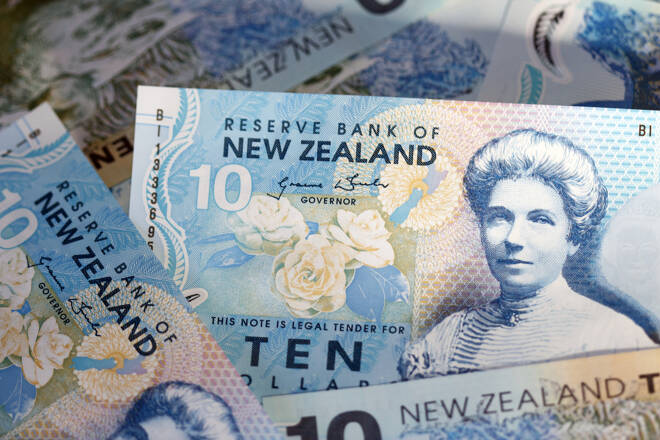Advertisement
Advertisement
DXY Headed for Weekly Losses Amid Multiple Downside Inflation Surprises; NZD/USD Up 3.4% This Week
By:
This week’s CPI, PPI, import price and consumer inflation expectations all alluded to US inflation having now peaked.
Key Points
- The buck rose on Friday, deriving support from better US economic sentiment and recent hawkish Fed policymaker commentary.
- But the DXY was still set for a weekly decline, with multiple data points having alluded to “peak inflation”.
- The Aussie and Kiwi were both on course for their strongest week of the year, boosted amid risk-on markets.
Buck Rises, But Still Set for Weekly Loss
The US dollar gained ground on Friday, with the DXY pushing back above 105.50 despite a further two data points on Friday alluding to inflation in the US having likely already peaked this summer. US import prices fell for the first time this year in July and a consumer sentiment survey showed a drop in one-year consumer inflation expectations to a new six-month low of 5.0%.
Analysts said that increased hopes that the US economy might still manage a so-called “soft landing” in light of recent data showing stronger than expected growth but fading inflationary pressures has made the buck more attractive versus its peers like the UK and Eurozone, where “soft landing” hopes are much slimmer.
Fed policymakers this week have also continued to jawbone on the need to continue raising interest rates given an inflation fight that is not yet won, supporting the notion that the Fed remains amongst the most hawkish of the G10 central banks (another USD positive). Still, this week’s downside inflation surprises have put the DXY on course for a 0.9% drop, with focus now shifting to next week’s July US Retail Sales report.
Euro, Yen, Sterling Suffer
The euro, yen and sterling all performed poorly versus the US dollar on Friday. EUR/USD dropped back to the mid-1.0200s, despite much stronger than expected Eurozone industrial output growth data for June that served to (somewhat) ease concerns about the impact that the energy crisis is having on the bloc’s economy. GBP/USD, meanwhile, slid back into the low 1.2100s, despite GDP posting a smaller than expected drop in Q2 on a much stronger than expected performance in June.
Analysts said other data released alongside the UK GDP figures alluded to further weakness in consumer-facing sectors, negating the positive impact on GBP from the better GDP figures. Concerns about the impact of low rainfall this summer are also a growing cause for concern, with UK households in new regions instructed to moderate water usage on Friday. This comes after reports earlier in the week suggested that the government is preparing for possible blackouts this winter if the European energy crisis worsens.
Aussie, Kiwi Set for Strongest Week in 2022
Gains in global equity markets on Friday helped the risk-sensitive Australian and New Zealand dollars gain ground against the buck, despite its advances against most of the rest of its G10 peers. AUD/USD and NZD/USD look set to end the week up 3.1% and 3.5% respectively, which would mark the best weekly gain for both pairs so far this year.
Upside in the Aussie this week comes despite markets having pared back expectations for another 50 bps rate hike from the RBA at next month’s meeting in tandem with a paring of Fed tightening bets. Australian money markets are now pricing under a 40% chance of a larger 50 bps move, though analysts are warning that next week’s release of Q2 Australian Wage Price Index figures could impact expectations, meaning potential volatility for the Aussie.
The kiwi, meanwhile, likely also derived support on Friday by overnight data showing that New Zealand food prices surged 2.1% MoM in June. Food comprises 19% of New Zealand’s Consumer Price Index, which is released quarterly. The data supports the case for the RBNZ to lift interest rates by a further 50 bps to 3.0% at next week’s meeting, which is the market’s base case.
Turning to the Canadian dollar; a drop in oil prices saw USD/CAD post a modest rise on Friday. But the loonie remains on course to post a roughly 1.25% gain versus the buck this week, with USD/CAD still trading close to its lowest levels since early-June under 1.2800. Canadian CPI data is slated for release next Tuesday, with traders on the lookout for signs that Canadian inflation has peaked, as seems to be the case south of the border.
About the Author
Joel Frankauthor
Joel Frank is an economics graduate from the University of Birmingham and has worked as a full-time financial market analyst since 2018. Joel specialises in the coverage of FX, equity, bond, commodity and crypto markets from both a fundamental and technical perspective.
Advertisement
